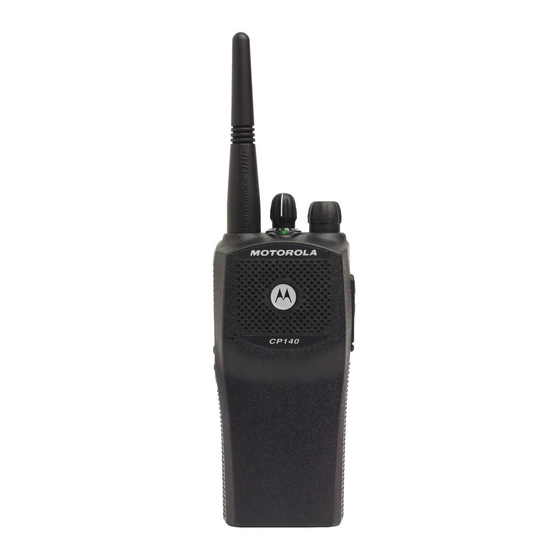2-4
3.0
UHF Transmitter
The UHF transmitter covers the range of 465-495 MHz. Depending on model, the output power of
the transmitter is either switchable on a per-channel basis between high power (4 watts) and low
power (1 watt), or is factory preset to 2 watts. The transmitter is divided into four major blocks as
shown in Figure 2-2.
Power Amplifier
Harmonic Filter
Antenna Matching Network
Power Control.
TX_ENA
PWR_SET
5T
TX_INJ
Q100
(From VCO)
3.1
Transmitter Power Amplifier
The transmitter power amplifier has three stages of amplification. The first stage, Q100, operates in
Class A from the 5T source. It provides 17 dB of gain and an output of 50 mW. The current drain is
typically 30mA. Components C105 and L103 match the output of Q100 to the 50Ω input of the
module U110.
U110 is a two stage Silicon MOS FET power amplifier module. Drain voltage is obtained from
UNSW B+ after being routed through current-sense resistor R150 in the power control circuit. The
output power of the module is controlled by varying the DC gate bias on U110 pin 2 (VGG).
3.2
Antenna Switch
The antenna switch consists of two pin diodes, D120 and D121. In the receive mode, both diodes
are off. Signals applied at the antenna or at jack J140 are routed, via the harmonic filter, through
network C122-C124 and L121, to the receiver input. In the transmit mode, Q170 is on and TXB+ is
present, forward-biasing both diodes into conduction. The diode current is 20 mA, set by R120-
R121. The transmitter RF from U110 is routed through D120, and via the harmonic filter to the
antenna jack. D121 conducts, shunting RF power and preventing it from reaching the receiver. L121
is selected to appear as a 1/4 wave at UHF, so that the low impedance of D121 appears as a high
impedance at the junction of D120 and the harmonic filter input. This provides a high series
impedance and low shunt impedance divider between the power amplifier output and receiver input.
USWB+
Power Control
VGG
VDD
Power Amplifier Module U110
RX_IN
(To Receiver)
Figure 2-2 UHF Transmitter Block Diagram
Harmonic Filter
Antenna
Switch
Antenna
Matching
Network
THEORY OF OPERATION
J140 Antenna
Jack
Antenna

